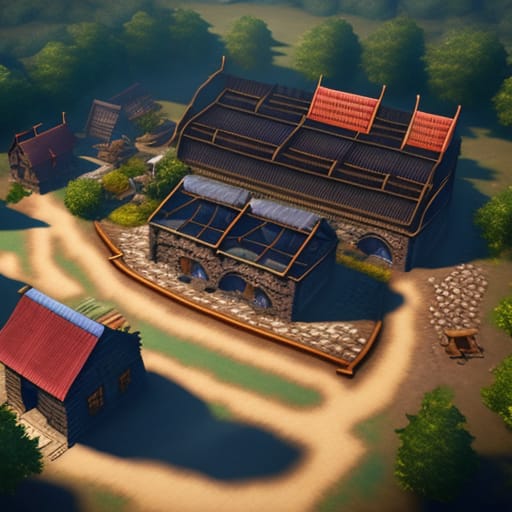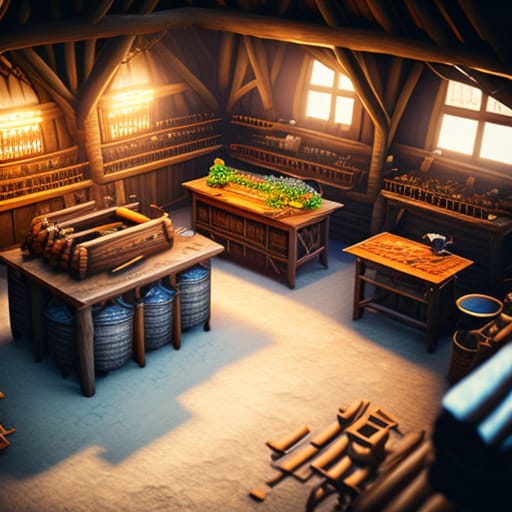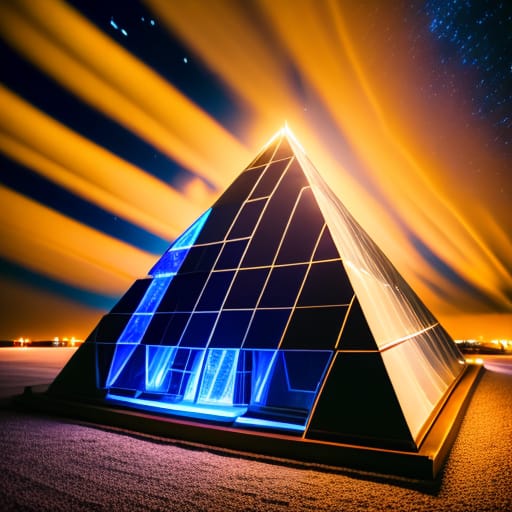Minecraft is a popular sandbox video game where players explore, gather resources, craft tools and structures, and interact in a three-dimensional, procedurally-generated world. The game world is made up of different types of blocks – the basic units in Minecraft.
Learning about the many different building materials, utilities, decorations, and other blocks is key to progressing in the game. This beginner’s guide will teach you all about Minecraft blocks.

What are Minecraft Blocks?
Minecraft blocks are the fundamental objects that make up the Minecraft world. They represent materials like dirt, stone, minerals, plants, and more. Blocks have different properties and behave differently in the game.
Key characteristics:
- Stackable into a three-dimensional grid
- Have collision boxes, defining their visual boundaries
- Can be obtained through mining, crafting recipes, or commands
- Each with unique texture, color, and attributes
Blocks are placed within a three-dimensional grid to build structures, tools, terrain and all other generated structures in a Minecraft world. Learning to utilize different blocks is essential for gameplay.
Types of Minecraft Blocks
There are several major categories of blocks in Minecraft:
Natural Blocks
Natural blocks generate across Minecraft worlds, like dirt, stone, sand, and gravel. They make up areas like the plains and forest biome terrain.
Key natural blocks:
- Dirt – Brown block found across biomes
- Coarse Dirt – Dirt with gravel pieces inside
- Grass Block – Top layer with green grassy texture
- Stone – Smooth gray stone found underground
- Granite – Speckled gray igneous stone
- Diorite – White igneous stone with gray streaks
Ore Blocks
Ore blocks contain valuable resources like coal, iron, gold, diamonds, and more. Mining ore blocks allows you to collect these resources for crafting, trading, and more.
Key ore blocks:
- Coal Ore – Black ores with coal inside
- Iron Ore – Brown ores containing iron
- Gold Ore – Shiny yellow gold ores
- Diamond Ore – Light blue ores with diamonds
- Emerald Ore – Greenish ores with emeralds inside
Plant Blocks
Plant blocks represent flora like trees, flowers, mushrooms, and vegetation found in the Overworld. Destroying these blocks will drop vital materials.
Key plant blocks:
- Oak Saplings – When grown, yields oak trees
- Dandelion – Yellow flower used to make dyes
- Poppy – Red flower, can produce dye
- Mushroom – Red and brown variants
- Leaves – From trees, slowly decays over time
Utility Blocks
Utility blocks have special properties like transmitting power, allowing spawn points, providing light sources, and more.
Key utility blocks:
- Crafting Table – Used to access 3×3 crafting grid
- Furnaces – Smelt or cook materials into final items
- Chests – Provides storage space for items
- Ladders – Allows players to climb vertical surfaces
- Torch – Produces light when placed
Liquid Blocks
Liquid blocks are fluid materials like water or lava that flow and spread out when placed. They have unique physics and can cause damage to players or mobs.
Key liquid blocks:
- Water – Flows downward and spreads
- Lava – Causes fire damage; flows slowly downhill
- Honey – Sticky golden liquid found in beehives
And many more types like decorative blocks, redstone components, non-solid blocks, and special portal blocks.
How to Obtain Blocks in Minecraft
There are several key methods to obtain blocks:
Mining Blocks
Equip a pickaxe then smash your tool against stone, ores, and other blocks to mine them. Blocks break faster with better pickaxe materials (wood, stone, iron, diamond, or netherite).
Crafting Blocks
Stand near a crafting table to open a 3×3 crafting grid interface. Drag materials from your inventory into the grid to combine them into new blocks and other items.
Example recipes:
Chest
- 8 Wood Planks
- Creates chest for storage
Emerald Block
- 9 Emeralds
- For building and decoration
Smelting Blocks in a Furnace
Toss your fuel (like coal) and ore blocks into a furnace. After a few seconds it will output ingots, smooth stone, and other smelted materials.
Example recipes:
Iron Ingot
- Iron Ore
- Derived from iron ore blocks
Stone
- Cobblestone
- Smooth, more polished variant of cobblestone
Trading with Villagers, Piglins, etc.
Build a trading hall and fill it with villagers to trade emeralds, materials, and other items for enchanted books, equipment, and decoration blocks like lanterns. Piglins may also barter materials.
And a few other methods like finding blocks in generated structures, using the /give command, or mining block clusters like debris in the Nether.

Key Uses of Blocks in Minecraft
Now that you know how to obtain blocks, what can you actually do with them?
Building Structures and Landscapes
Harvest dirt, wood logs, and other blocks from terrain to mold landscapes and build themed creations. Design houses, towers, castles, pixel art, working computers inside Minecraft, and anything else you can imagine.
Use natural blocks like grass and stone to add detail. Utilize utility blocks like fences and torches to decorate. The possibilities are endless!
Crafting Weapons, Armor, and Tools
Blocks like iron or diamond can be crafted into powerful gear like swords, bows and arrows, shields, helmets, leggings, chestplates, and boots at equipment crafting tables.
Craft pickaxes, shovels, axes, and hoes by placing sticks and material blocks (like wood planks or iron ingots) into patterns. Better gear aids survival and mining.
Redstone Circuits and Contraptions
Redstone components like redstone dust, repeaters, and pistons can be used to build circuits, automated farms, hidden door puzzles, and complex machines. Place redstone torches, buttons, levers, and pressure plates to trigger behaviors.
Slime blocks, observer blocks, and other specially-powered blocks add movement and reactivity.
Aesthetic Decoration
Certain vibrant or glowing blocks like end rods, colored wool blocks, glass, glowing crying obsidian, and vertical bamboo stems can liven up room interiors as decoration.
Use rare block types like glowstone, colored glazed terracotta, and block arrangements like chorus plants to decorate builds.
Special Unique Block Types
While most blocks are obtainable through gathering, building, and crafting, some special blocks have unique properties and uses:
Barrier Blocks
These invisible blocks can only be obtained using inventory editors or the /give command. Barriers block players, mobs, and motion. Use barriers to create obstacles or define map boundaries and walls.
Command Blocks
Command blocks can run console command scripts. Control weather, spawn mobs, give items, teleport players, and more. Enable cheats, then use give @s command_block to get one.
Structure Blocks and Block Palettes
Structure blocks save whole multi-block structures into files, allowing you to store, replicate and load in complex assemblies and generated structures from world templates into custom maps.
You can customize block palettes in structure block files, picking custom blocks for faster prototyping.
And other special blocks like jigsaw blocks, technical light blocks, and behind-the-scenes blocks like entity display pedestals.
Customizing and Modding Blocks
Don’t like the vanilla block textures or properties? Mix up gameplay by modding blocks:
Add Custom Blocks
Install data packs that inject new block types into the game like glowing light blocks, edible candy blocks, trampolines, locked chest variants, and more custom-coded functionality.
Change Textures and Models
Resource packs swap out block imagery and 3D models. Pick ultra-realistic textures, themed texture packs, pixel art, you name it. Change default block appearance based on personal preference.
Alter Block Properties
Mods can directly edit block attributes in the Minecraft codebase, like making lava light blocks emit cyan light instead of orange glow particles, reducing gravity and drag to mimic floating helium blocks, or changing slipperiness, hardness, transparency, and more block traits.
Blocks Across Minecraft Versions
Block availability differs across Minecraft editions:
Java Edition has the most robust features, mods, and customization options for blocks. Bedrock Edition allows cross-play between phones, consoles, and Windows 10. Legacy Console Editions have limited subsets of blocks from outdated versions.
As new game updates roll out, fresh blocks, mobs, biomes, and dimensions get introduced across editions through official DLC version history releases or unofficial mod content.
The Future of Blocks in Minecraft
The core block dictionary continues expanding as Mojang releases updates and game spinoffs:
- New dimension-themed blocks introduced with updates like 1.16’s Nether blocks
- Experimental snapshots testing upcoming features like customizable pottery blocks
- Ambient effect blocks planned like pinecones spreading over time
- Speculation around parity changes and stability improvements
The block palette progresses in tandem with new biomes, structures, mechanics from Minecraft Dungeons, Minecraft Legends and Minecraft Story Mode too.
Community mods and data packs will further stretch possibilities as always.

Conclusion – Block Importance in Minecraft
Blocks are the foundation of Minecraft worlds and enable every major gameplay element. Learning intricacies of gathering, utilizing, modding and customizing blocks through mining, crafting recipes, commands and trading systems allows you to fully experience this sandbox game.
Understanding types ranging from basics like dirt and cobblestone to rare blocks like glowstone and crying obsidian, along with properties governing light emission, blast resistance, flammability and more will prove essential for thriving across survival, creative, adventure or spectator game modes.
Minecraft offers unlimited potential through its interlocking block systems. Hopefully this beginner’s guide provided enough tips to get you started. Now it’s time to jump into a Minecraft world and start placing some blocks!
Frequently Asked Questions
What are some examples of ore blocks in Minecraft?
Some common ore blocks include coal ore, iron ore, gold ore, diamond ore, and emerald ore. Breaking these blocks drops the respective resource which can be smelted and crafted into items.
How do you obtain netherite in Minecraft?
Netherite is a rare material found in the Nether dimension. Mine ancient debris blocks with a diamond pickaxe, collect the debris, then combine 4 debris with 4 gold ingots to craft one netherite ingot.
What can you craft with crying obsidian?
Crying obsidian currently has limited uses. Combining a compass and crying obsidian creates a lodestone, which can reset a compass to point back to its location. Speculation suggests it may later craft respawn anchors.
What types of Minecraft blocks have gravity or fluid mechanics?
Blocks with unique gravity, fluid flow or dripping particle effects include water, lava, honey, and sand. These liquid or ambient effect blocks pour downward until hitting solid blocks below them while spreading outward horizontally.
Can you recommend some good block-related Minecraft mods?
Some popular block mods include Xaero’s Minimap for mapping terrain, Quark for new building blocks, Chisels & Bits for micro block construction, and MrCrayfish’s Furniture Mod for decorative furnishings and seating.